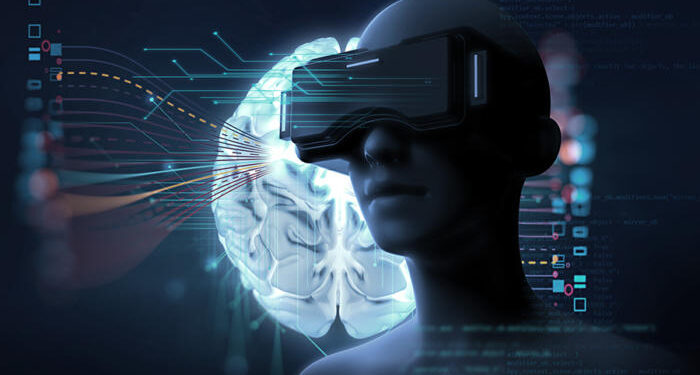The future is technology, and with the rapid development of technology, that future is here and is quite bright and brilliant. Technology is available not in big tech firms but is used in our everyday lives, 24/7. From making calls and sending texts from different devices to doing it all and much more from just one device. Technology has come a long way. This is all due to technological advancement, and in the future, we will see the convergence of virtual reality and artificial intelligence.
People tend to get a bit confused with AI and VR. The main difference between AI and VR is that:
- VR- It creates an artificial environment, in which we can blend in with the help of technology.
- AI– the potential of a computer to accomplish human-like activities that require the use of the human brain.
What is Artificial Intelligence (AI)?
The term was coined by John McCarthy in the year 1955, which is a computer’s or a machine’s ability to learn and reason like humans. AI is another topic of research that was developed to make machines smart, which indicates that machines with AI can function on their own without being told what to do.
Programs that imitate human behavior generally use the term Artificial Intelligence. The ultimate intelligent machine is a versatile agent that can sense its surroundings and take the necessary steps to enhance its chances of success. Today, AI is largely utilized to successfully interpret human speech, compete in strategic games like Chess, drive automobiles, and translate challenging data. AI is also regarded as a threat to humanity if it continues to advance at its current rate. The primary objective of developing an AI system is to attain the goal of rational thinking, learning, and solving problems.
What is Virtual Reality (VR)?
Virtual Reality (VR) is an artificial environment experience that can be comparable to or completely distinct from the real world. Virtual reality applications are mostly utilized for amusement, particularly in video games, for educational reasons such as military, medical training, and practices, and commercial objectives such as digitally organized meetings.
Augmented reality (AR) and mixed reality (MR) are two more sorts of VR-style technologies that can perform extended reality (XR). Today’s conventional virtual reality system employs virtual reality headsets or multi-projected environments to generate visuals that appear genuine, noises, and other stimuli that engage the user who is physically present in that virtual world. A person who utilizes virtual reality technology may view an artificial environment and interact with all of the objects in that world.
Main differences between Virtual Reality and Artificial Intelligence
- Because it mirrors the world and the user in virtual reality senses everything, VR is an open and closed system, however, artificial intelligence is a closed system because it includes a learning process.
- Virtual reality is a computer-generated simulation of the real world, whereas artificial intelligence is a simulation of human intellect done by a machine to solve issues rationally.
- VR is a system capable of creating an artificial environment that seems genuine, whereas AI is a system capable of making vital decisions.
- Virtual reality must first develop all of its components before it can enhance the network, however, artificial intelligence does not need to finish the evolution of any components before it can cure the problem.
- Virtual reality allows users to virtually experience different situations, but artificial intelligence evaluates issues and provides solutions without human negligence, and is faster with 24*7 availability.
- VR facilitates and enhances learning by creating a realistic environment. AI, on the other hand, delivers artificial aid while minimizing human mistakes.
AI-VR Duality
While some individuals may feel that artificial intelligence would eliminate the need for virtual reality entirely, this is far from the case. In reality, VR will remain around for the most part for basic usefulness. Simple web apps (blogs, tiny e-commerce businesses, etc.), static websites (landing pages, portfolios, etc.), and even most apps do not require artificial intelligence to function well. These simpler, less sophisticated bits of technology should find classical VR to be more cost-effective and beneficial.
Yes, AI could improve some of these applications, but the great majority of them do not require it sufficiently to warrant investment. Although VR has limitations, it is a highly practical and effective solution to add responsiveness to many applications.
So, rather than AI wiping off VR, I believe they will exist in a sort of tech dualism for the foreseeable future. Behind the scenes, VR will continue to evolve, making its responsiveness and calculation abilities even greater than they are now.
Conclusion
To summarize, artificial intelligence is an excellent technology for many firms seeking to replace human labor for specialized activities. AI systems may be employed effectively in production lines since their costs are far lower in the long run than a human employee’s compensation.
AI devices do not require health insurance; just maintenance payments are required. Virtual reality is a great match for firms trying to break into the new generation at a lesser cost. VR advantages are limited to a few years since the system makes numerous mistakes that cost businesses money, which is why AI solutions should be integrated from the start to prevent having to change a system later on.
Author- Toshank Bhardwaj, AI Content Creator









